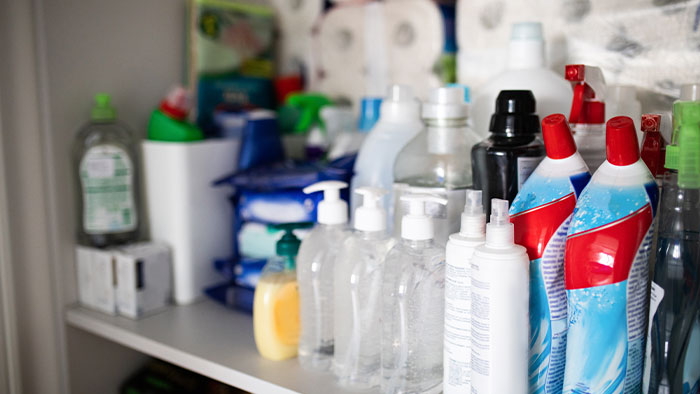Quick Facts on FIFRA for Retailers
Guest blog from Dee Wilson, UL
- By [ Tiffin Shewmake ]
- 09/02/2021

As COVID variants continue to spread globally, new products that address disinfection or sanitization (antimicrobials) are being developed and marketed at a growing rate. It is important for retailers to be aware of the types of products entering the retail space and understand the appropriate regulatory Agency and requirements for different products. Given some recent enforcement activity related to pesticide products, retailers who stock and use disinfection and sanitation products, especially new products or vendors, need to understand the requirements to reduce enforcement risks.
The Federal Drug Administration (FDA) regulates sanitizers and disinfectants for use on humans and the Environmental Protection Agency (EPA) regulates antimicrobial products used for the sanitization and disinfection of inanimate objects, surfaces, air, and water. Each Agency has different requirements, registration processes and mandated labeling content and format. Drug Facts Labels indicate an FDA product. Products that are regulated under the EPA Federal Insecticide, Fungicide and Rodenticide Act (FIFRA) include antimicrobials that make public health claims and can be in the form of treated articles, pesticide products and pesticide devices. This article covers products that are regulated by the EPA and areas such as treated articles that can lead to confusion on the requirements.
Under FIFRA, a pesticide is any substance or mixture of substances intended to prevent, destroy, repel, or mitigate any pest (which includes bacteria, viruses, germs, and other microorganisms). Plant regulators, defoliants, desiccants, and nitrogen stabilizers are also considered pesticide products. Pesticide products are required to be registered on a federal level as well as in each state where the product is sold. These products must also include the EPA Registration number and EPA Establishment Number on its labeling (EPA Reg. No. and EPA Est. No.) among other requirements.
Pesticide devices operate by physical or mechanical means to trap, destroy, repel, or mitigate any plant or animal life declared to be a pest. Treated articles incorporate antimicrobials or preservatives to treat or protect the article but do not extend protections beyond the treated article or make public health claims. For example, a wood product treated to protect the wood from insects would be considered a treated article but a product that claims to “fight germs” would be considered a pesticide. Pesticide devices and treated articles do not require federal registration. However, they are regulated and have many requirements. Pesticide devices are required to include the EPA Establishment Number (EPA EST. No.) on the label and/or package. Some states also require pesticide devices to be registered.

With the onset of COVID, the EPA has been seeing more violations in non-registered and misbranded pesticides being sold in the marketplace. Retailers need to understand the claims that are being made for products, as claims can move a product out of one category and into another. For example, an air filtration unit making public health claims that would incorporate a pesticidal substance or chemical to impart pesticidal activity is no longer a pesticide device and must be registered as a pesticide product.
To avoid fines and/or be required to remove items from retail shelves, retailers must be ever vigilant of supplier products that may incorrectly categorize and/or misbrand their products. The EPA has a number of helpful resources on FIFRA and pesticides. These include Pesticides web page, Pesticide Devices: A Guide for Consumers, Treated Articles, and Misbranded Definition.
UL has additional training courses on this topic, including a FREE FIFRA overview course and an online in-depth FIFRA US Pesticide Regulation course.
Dee Wilson, Senior Regulatory Specialist and Specialty Consulting Services with UL
For information on how UL works with retailers and brands to set up and maintain their chemical compliance and sustainability programs, visit https://www.ul.com/services/retail-supply-chain-transparency or make an inquiry to a UL solution advisor.
Tags
-
Retail Compliance Center
-
Sustainability & Environment
